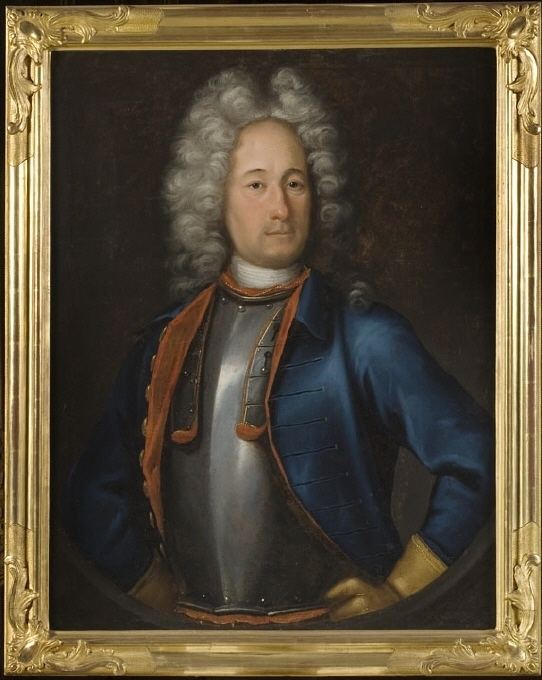Name Olof Stromstierna | ||
 | ||
Olof Stromstierna (1664–1730) was a Swedish naval officer and admiral. He was born as Olof Knape but became ennobled under the name Stromstierna in 1715.
Contents
Early years and in the Dutch service
Stromstierna was born 1664 in Bohuslan where his father, Nils Knape, was a fisherman. Like many people in the archipelago, Stromstierna worked at the sea during his youth. He first sailed domestically, but went to France, England, America, and East Indies in 1697. During these travels he joined the Dutch East India Company and was once in the service of the States-General of the Netherlands, in which reached the rank of lieutenant.
The Swedish Navy Staff
In 1698, Stromstierna was offered the chance of joining the Swedish navy. He became a captain in 1700, and assisted admiral Cornelius Anckarstierna with the enrollment of "all the existing seamanship in Bohuslan". In 1701, he joined the Swedish expedition to Arkhangelsk in Russia as the head of the frigate Marstrand. Stromstierna became head of the first regiment in Bohuslan in 1704. His most important missions were to convoy transport ships, undertake cruises, and protect the Bohuslan coast against Danish attacks. As a reward, he became a schout-bij-nacht in the Gothenburg squadron in 1714 and was ennobled under the name Stromstierna in 1715.
The fighting in Bohuslan against Tordenskjold
In 1716, Stromstierna was missioned to convoy a number of transport vessels, loaded with siege artillery and supplies, to Svinesund. When he reached Dynekilen, his flotilla was attacked by Peter Tordenskjold who managed to destroy many of the ships after a five-hour-long battle. For his efforts in the battle, Stromstierna was named vice admiral by the Swedish king Charles XII.
During Stromstierna's subsequent period as commander of the Gothenburg squadron, he contributed significantly to the repelling of Tordenskjold's attack on the city in 1717. That year he became head of Roddargastarnas Regiment (3,000 men), and in 1718 he led the shipment of over a hundred ships loaded with food and other supplies from Gothenburg to Stromstad, which made the military campaign against Norway possible.
The last few years
When Stromstierna retired from active service in 1719, the Swedish government raised him to the rank of full admiral. He spent the rest of his years, until his death in 1730, at his farm Venso in Bohuslan.
